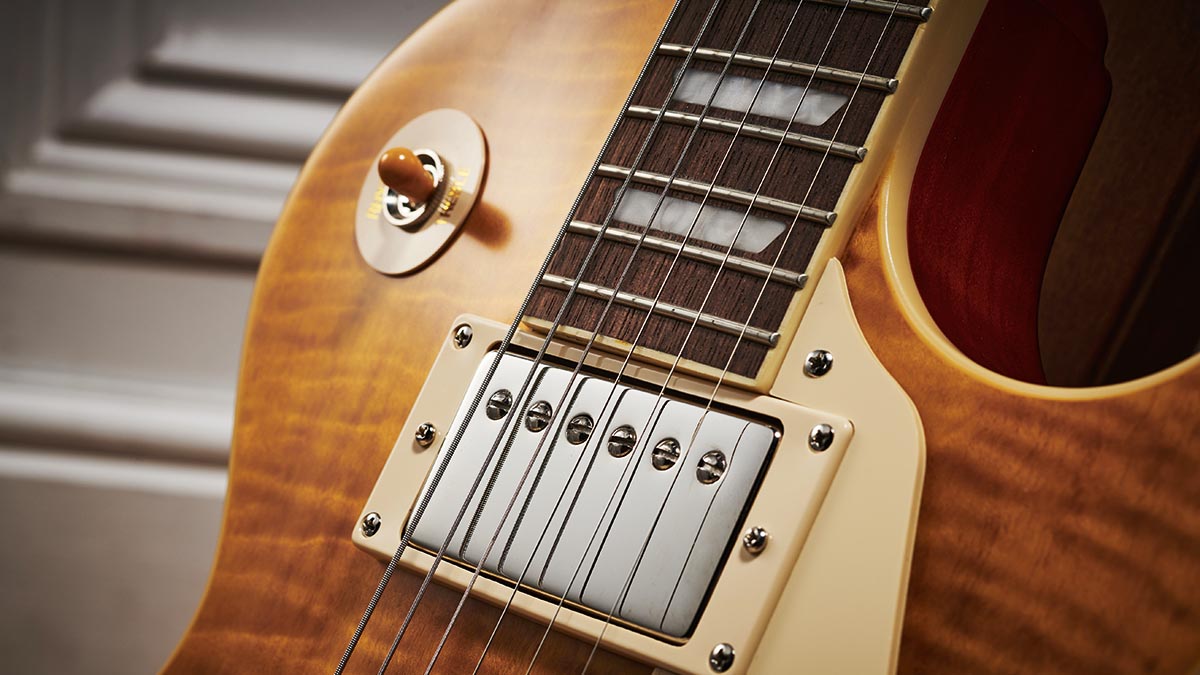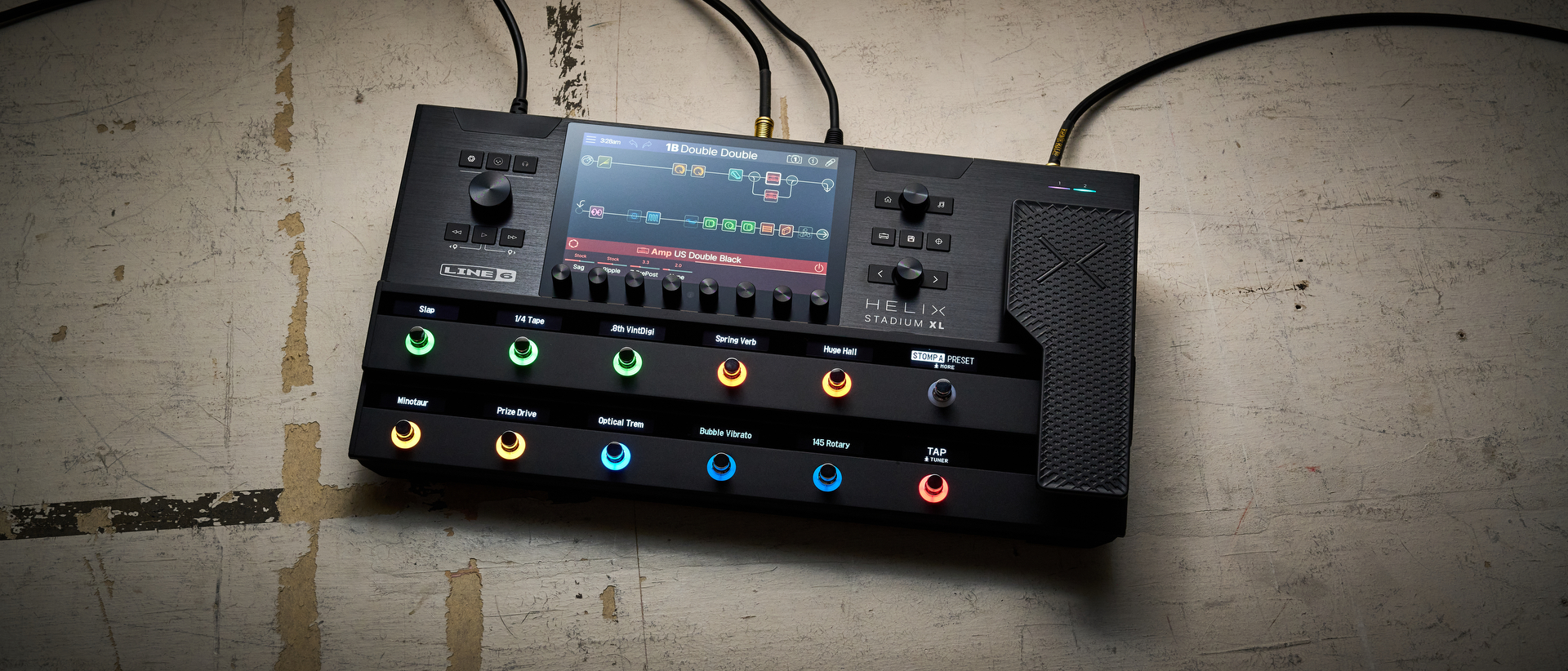Joe Bonamassa on why he loves the Gibson Les Paul: “Pretty much all of the English guitar legends of the 1960s, that’s what they were holding”
Joe Bonamassa has a dazzling array of guitars – but he always goes back to the ’59 LP he describes as “perfect” for him...

If you look through Joe Bonamassa’s guitar rack at the side of the stage on any given night, chances are you’ll find all kinds of vintage instruments – from mouth-watering Fenders like mid-’50s Strats and B-bender Teles to rare Gibson originals including Korina Flying Vs, ’70s Firebirds and cherry red semi-hollows. But if there’s one guitar he’s going to play live or use in the studio more than any other, it’s the Gibson Les Paul.
It was a decision made early on in his career which came down to the design as well as the ’60s and ’70s masters who took the sound of American blues to new expressive heights...
“I play Les Paul Standards for the simplicity,” Bonamassa tells TG, in between the studio sessions for his next album and preparations ahead of his North American spring tour.
“I also like rosewood fingerboards, so that helps narrow it down. And my heroes played Les Pauls, too. Pretty much all of the English guitar legends of the 1960s – everyone from Eric Clapton to Jeff Beck, Jimmy Page to Peter Green and later influences like Gary Moore – that’s what they were holding.”
With so many precious tools at his disposal, arguably standing as one of the finest collections in the world, one can only wonder how he arrives to the final decision of which to employ on any given track.
What can a Les Paul say that another guitar might struggle to articulate in the same manner and why might he use a Les Paul Standard instead of, say, a Junior or Custom? Many of us have wondered what exactly is it that the guitarist hears when he imagines one of his tracks coming to life.
“I find picking up a Les Paul makes it easier to achieve the tone that’s stuck in my head,” Joe reveals. “You can achieve your sound with any guitar. For example, I am a proud Les Paul Junior owner. With that said, I rarely play them. There is something about the flatness of the top that I never bonded with... but it’s worth bearing in mind that plenty of players have ruled and can rule the world with those things!
All the latest guitar news, interviews, lessons, reviews, deals and more, direct to your inbox!
“A Les Paul Standard is definitely the sound I hear in my head. If had to pick a favourite out of the collection, it would be the one I call ‘Principal Skinner’. I’ve owned it for almost 15 years and it is the perfect guitar for me. It’s serial number 9-1951, made in 1959.”
This guitar had been bought by another collector in 2006 from American auction house now known as Bonhams Skinners for the price of $292,000, which, according to Bonamassa, set the non-celebrity record for an instrument sale.
The all-original Standard – originally owned and kept in great condition by a family in Benton, Minnesota – then came into Joe’s possession around 2011, before being renamed after one of his favourite Simpsons characters and taken to highly acclaimed Nashville luthier Joe Glaser for refretting.
In 2014, Gibson did a small run of 50 ‘Skinner Bursts’ aged by Tom Murphy as well as being signed and played by Bonamassa himself – every piece sold before even going into production. Which goes to show he’s one of the world’s most respected Les Paul aficionados and, ultimately, someone who is never afraid to share his unique insight and accumulated pearls of wisdom with the rest of the guitar community.
If you’ve ever seen someone top-wrapping their strings over the tailpiece of their Les Paul, for example, that decision will most likely have been inspired by either Billy Gibbons or Joe...
“I like top wrapping because it lessens the break angle over the bridge,” he says. “Two things are achieved: it’s easier on a vintage ABR-1 and it makes the guitar feel slinkier. The other tip I like to share is on truss rod tension – I believe it’s key to a good, resonant Les Paul, because when it’s too tight the guitar gets choked, and too loose, the guitar plays stiff.”

In more recent years, he’s been helping players on a budget get a taste of the world-class tones he’s associated with, thanks to Epiphone replicas of his 1960 ‘Norm Burst’ and his 1959 ‘Lazarus’.
As well as the good karma from making high-end guitars more universally inclusive, it’s easy to spec these kinds of signatures out, he explains, given that they’re based on choice models from his own collection. And as he says in conclusion: “When I want that big heavy sound and that’s what the song requires, I just grab a Les Paul Standard...”
Amit has been writing for titles like Total Guitar, MusicRadar and Guitar World for over a decade and counts Richie Kotzen, Guthrie Govan and Jeff Beck among his primary influences as a guitar player. He's worked for magazines like Kerrang!, Metal Hammer, Classic Rock, Prog, Record Collector, Planet Rock, Rhythm and Bass Player, as well as newspapers like Metro and The Independent, interviewing everyone from Ozzy Osbourne and Lemmy to Slash and Jimmy Page, and once even traded solos with a member of Slayer on a track released internationally. As a session guitarist, he's played alongside members of Judas Priest and Uriah Heep in London ensemble Metalworks, as well as handled lead guitars for legends like Glen Matlock (Sex Pistols, The Faces) and Stu Hamm (Steve Vai, Joe Satriani, G3).




